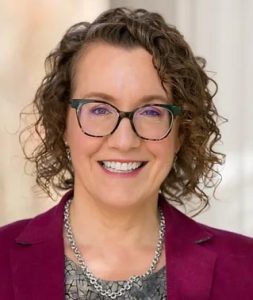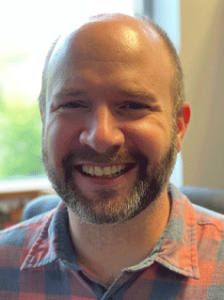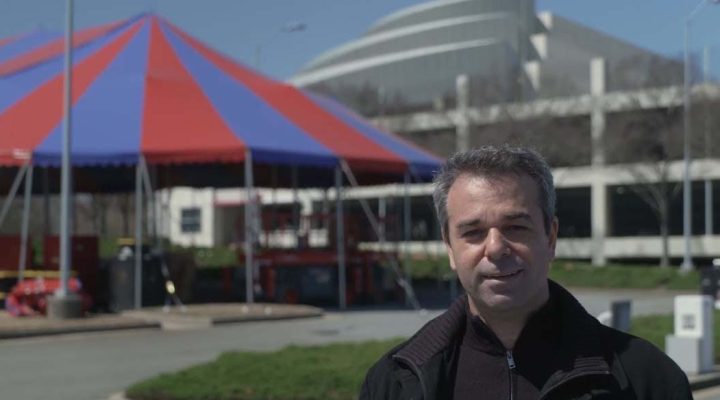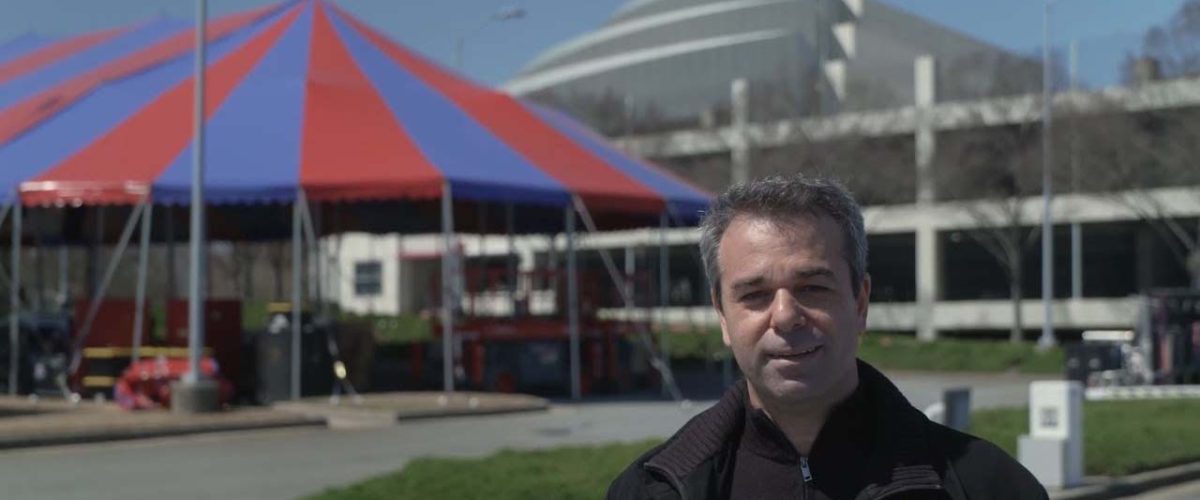“The show must go on” was the mantra of many performance organizations forced to become even more creative during the COVID pandemic. Operas moved outside, and bassoonists took their bows online.
Churches followed suit and pivoted to streaming worship services and conducting business meetings via Zoom.
Now in fall 2022, as churches prepare for Advent and Christmas and dancers limber up for another production of The Nutcracker, life appears to be back to normal for organizations that depend on in-person gatherings. However, the number of persons gathering in symphony halls and sanctuaries is down and in danger of staying that way if churches and arts institutions don’t build on the innovations they made during the peak of the pandemic.
Not everyone’s back

Robin Anderson
As reported in Baptist News Global, in 2020 less than half of all Americans reported being members of a church or faith community, a new low. Further, one out of three churched adults stopped attending in person or online during the pandemic, and these members have been slow to rebound.
“We do have some older folks who haven’t returned in-person due to health concerns,” said Robin Bolen Anderson, pastor of Commonwealth Baptist Church in Alexandria, Va. “But I think folks of all ages got out of the habit of going to church.”
“The actual number of those attending church is 30% to 50% lower than before COVID.”
Research from Lifeway backs this up. Although 91% of churchgoers surveyed said they planned to return to in-person worship service after the pandemic, the actual number of those attending church is 30% to 50% lower than before COVID.
Other church members are not returning because they prefer the online iteration of worship. Of those adults who regularly attend church, one in five is doing so solely online, while one in four are mixing in-person worship attendance with online worship attendance.
Millennials and the big picture
Millennials, (born between 1981 and 1996) are most inclined to take advantage of this hybrid model of church attendance, which fits with their generation’s do-it-yourself approach to faith.
“Millennials are decoupling spirituality from the congregation,” according to Debbi DiGennaro of Eastern Mennonite University, who examined spiritual practices during COVID. “The role of the church as the center of spiritual activity is starting to dissolve.”

Starlette Thomas
Starlette Thomas, director of The Raceless Gospel Initiative, believes this is part of a larger movement. “This emptying, this dumping of excess religious traditions and subsequent mass exodus was already happening. The pandemic just provided cover for a consciousness ready to bloom.”
What arts organizations have in common with churches
The COVID pandemic affected arts attendance in a similar fashion. From concert halls to black box theaters, in-person attendance remains down for arts organizations. Ticket sales fell by 40% for the 2020-2021 season compared to sales before the pandemic.
“Last season was a struggle. We consistently came up short of our projected numbers,” said Scott Haden of Forward Theater in Wisconsin. Like church members, some audience members simply fell out of the habit of going to performances.
This is especially true for persons of color and those with disabilities, who have not always felt welcomed in traditional performance spaces and are more comfortable engaging with content online. Both groups seem reluctant to, or in the case of persons with disabilities, unable to, transition back to in-person attendance.
Many older arts-goers, the financial foundation of many organizations, also are uncomfortable returning to in-person spaces because of ongoing health concerns.
With the future at stake, organizations that depend on in-person attendance will have to make significant changes to survive.
Creativity at The Atlanta Opera
The Atlanta Opera is one such organization that not only weathered the pandemic but continues to thrive in its aftermath. Its success could be an example for churches looking to do the same.

Tomer Zvulun
As performing arts groups around him began to close their doors during COVID, Tomer Zvulun, general and artistic director of the Atlanta Opera, kept the organization open by changing the way it operated and what it offered. To continue the day-to-day management of the opera and respond to the demands of the unfolding crisis at the same time, Zvulun adopted an “ambidextrous organizational strategy.”
Harvard professor Michael Tushman coined the term “ambidextrous organization” to describe a business that excels at doing two different things at the same time: “They must constantly look backward, attending to the products and processes of the past, while also gazing forward, preparing for the innovations that will define the future.”
In other words, one “hand” is running the business while the other “hand’ is changing the business.
Running any business involves managing the core activities that keep the organization alive. These activities are focused on the short term and concern financial, commercial and production goals. For the Atlanta Opera, things like ticket sales, auditions, and advertising are all necessary. In the same way, churches must pay staff and the light bill, pass the budget and keep track of membership.
Most successful businesses and long-established churches have little trouble with this side of an ambidextrous organization. Boards, bylaws, committees and constitutions are all well suited to maintaining the status quo. But when confronted with change, institutions struggle to adapt. This is why the other side of the ambidextrous model is so vital.
Empowering innovation
When an institution has a team funded and empowered to innovate, change can happen because paralyzing status-quo fears can be counterbalanced.
The change side of the ambidextrous model is future oriented and focused on medium- and long-term goals. Experimentation is expected, and short-term failure is considered a stepping stone to innovation. Finding the right structure for this side of a church or business is one of the most challenging steps in transitioning to an ambidextrous model, but one of the most necessary if organizations are going to evolve.

Mike Bonem
Within congregations, “I’ve sensed that a lot of the energy and creativity around doing things differently has been overwhelmed by concern about the people who aren’t coming back, or what the budget looks like, or by the desire to go back to the way it was before the pandemic,” said leadership expert Mike Bonem. “I don’t see a lot of churches doing the deeper work that would ultimately help them engage more effectively with their community.”
Fortunately, churches have the Holy Spirit to “not only move us forward but keep us going in the direction of God’s undivided ‘kin-dom,’” Starlette Thomas said. “Creativity is a fruit of the Spirit. Churches that do not create are not interested in spiritual growth.”
Therefore, the change side of the ambidextrous organization is vital not only for long-term success but for a healthy church.
Sprint teams
“If you are not changing the way you are thinking according to the world around you with new technologies and new generations … you’re gonna die,” said Tomer Zvulun. To facilitate the changes he needed to keep the Atlanta Opera a contender in the cultural scene, Zvulun organized the change side of the company into “sprint teams.”
As the name implies, these teams work quickly and with a great deal of flexibility on specific programs and projects that align with the organization’s larger vision. A church might use such teams to create content for its web presence or organize an event for World AIDS Day.
 In the immediate response to COVID, The Atlanta Opera cancelled all its scheduled productions and moved performances outdoors to an enormous tent on the campus of Oglethorpe University. To facilitate this transformation, the sprint teams each were given a task, such as researching operas appropriate to the new venue, hiring local vocalists or working with public health officials.
In the immediate response to COVID, The Atlanta Opera cancelled all its scheduled productions and moved performances outdoors to an enormous tent on the campus of Oglethorpe University. To facilitate this transformation, the sprint teams each were given a task, such as researching operas appropriate to the new venue, hiring local vocalists or working with public health officials.
Before the Big Tent Series was finished, the teams already were working on the next innovation in opera, using video captured during the outdoor performances and rehearsals to create a 360-degree digital opera experience online. They’ve also launched the Discovery Series, a season of operas staged in creative ways at smaller venues to attract folks new to opera.
This is all part of Zvulun’s vision for The Atlanta Opera as a company that “reimagines opera.”
Blockbuster vs. Netflix
Vision and identity are key to making an ambidextrous model work. An expansive identity such as this gives an organization permission to explore beyond its core product.
If The Atlanta Opera envisioned itself simply as a group that produced traditional mainstage operas, then it would limit its ability to creatively engage a changing environment. In a TED Talk, Tomer Zvulun compares the company Blockbuster, which saw itself as a VHS and DVD rental business, to Netflix, which also rented DVDs but saw itself as part of the entertainment business. Blockbuster went out of business when technology and viewing habits changed, while Netflix made $7.93 billion in 2022 and was nominated for an Academy Award.
To better engage the post-COVID world, churches need to have a broader view of who they are that will allow them to diversify what they’re offering.
The term “church” itself is synonymous with the building, and it’s easy for members to define church as what happens in that building on Sunday morning. However, while Sunday morning worship may be a church’s core product, if the organization is going to meet the needs of those who haven’t returned to in-person worship, then it will need to broaden its identity to encompass the necessary changes.
“Instead of seeing itself as in the ‘church business,’ a church would do better to see itself as in the ‘gospel business’ and let that identity empower its creative side.”
Instead of seeing itself as in the “church business,” a church would do better to see itself as in the “gospel business” and let that identity empower its creative side.
Learning from the pandemic pivot
We know it is possible. Prior to COVID, many churches had done little online beyond a basic website, but most were able to pivot quickly to online worship when lockdowns forced the change. This pandemic pivot has given churches a platform to build on if they are willing to embrace the opportunity to expand beyond the worship service. An increasing number of arts organizations are showing the way.

Scott Haden
In Madison, Wis., Forward Theater is harnessing its creativity to offer pre-show lectures, special presentations, interactive post-show discussions and podcasts on the website in addition to filmed versions of performances for audience members who prefer not to attend in person.
“Meeting our patrons where they are and assisting them on a personal level, even when it means more work for our staff, has proven to be effective,” Haden said. “We have also made accessibility a priority, not just for elderly patrons but for everyone.”
Meeting people where they are is an effective strategy for churches whether online or in person.
A survey of church members during the pandemic revealed that all members felt a greater commitment to their churches when those churches were willing to innovate in response to members’ needs. For these churchgoers, creativity equaled caring. Especially when the churches’ innovations focused on social support and community building.
Increasing accessibility with hybrid worship services and church events for members who are disabled or neurodiverse, or have children that are, helps these individuals and families participate in the life of the church even when they cannot be physically present.
If churches continue to meet their members’ needs in creative ways, the commitment of their members is likely to extend beyond COVID.
Defining ‘commitment’
Churches, though, must be careful not to define “commitment” too narrowly.
The percentage of younger believers re-engaging church has increased since 2019, but that engagement is most often online and with multiple churches.
“They may be less likely to show up in church, but they are not done with God.”

Debbi DiGennaro
When it comes to faith, “Millennials want accessible, customizable options,” DiGennaro.said “They may be less likely to show up in church, but they are not done with God.”
Churches also must be willing to meet Millennials where they are. As the most racially, socially and culturally diverse generation in modern history, Millennials value things like breaking down barriers, authenticity, dialogue and social justice. These values are all about loving our neighbors as ourselves — and doing that effectively and meaningfully involves going beyond the church and out into the community. It also requires self-reflection to ensure the relationship with that community is equitable and just.
Self-examination at Forward Theater
Motivated by calls for change from BIPOC members of the broader theater community, the staff at Forward Theater initiated a process of self-examination for the company.
“The events of 2020 certainly put an emphasis on the importance of new policies and ways of thinking,” Scott Haden explained. “The theater looked at its record of diversity when it came to hiring staff, talent and technicians and set goals to hire in a way that reflected the community’s diversity.”
Then, Forward Theater compiled a history of its outreach efforts to determine what had been impactful.
“We took that time to dive deeper into an examination of what we were doing right and what we needed to do better,” Haden explained. Not content with this summary, the theater recruited working groups from its board and advisory company to review their work and challenge any assumptions they found by providing new perspectives and prioritizing action items.
“Although well meaning, not all their endeavors had been effective at reaching communities traditionally underrepresented in theater audiences.”
Forward Theater is a good model for churches that need to change their outreach efforts to keep pace with the post-COVID environment. They had the humility to realize that although well meaning, not all their endeavors had been effective at reaching communities traditionally underrepresented in theater audiences. Forward Theater also places a premium on building authentic relationships with its community that are based not on what the company can get but on what it can give back.

Kathleen Culebro
Some arts organizations are reinvigorating their relationships with their communities by asking, “What do our communities need? And how can we serve those needs?” according to artistic director Kathleen Culebro. Her theater company, Amphibian Stage in Fort Worth, Texas, created the video series This Is My Story to amplify the voices of Black men in the community through storytelling, poetry and music. Amphibian Stage is committed to increasing its online programming to reach a broader audience.
In 2022, The Atlanta Opera elevated the experiences of the LGBTQ community with the opera As One about a transgender woman’s transitioning journey. Part of the opera’s “Come As You Are” festival of intimate chamber operas, the production featured the first transgender performer to sing the lead role, and the conductor and costume designer also were transgender. In conjunction with the production of As One, The Atlanta Opera hosted a “talk back” after the end of each performance where the cast, creators and local members of the transgender community shared their experiences and reactions to the opera.
By magnifying the voices of traditionally marginalized people, as these theaters and The Atlanta Opera have done, churches could both help their communities and begin a process of reconciliation with them.
“This repositioning would decenter the pulpit as the only place that God speaks,” Starlette Thomas noted. “It could increase participation and would remind us that God’s voice is coming from every direction.”
A way forward
Not only does the church need the community to hear God’s voice and truly live into God’s vision, but the church also has something to offer a community still struggling with the aftermath of COVID. That will only happen, however, if the church is willing to be creative and do the hard work of change both internally and externally.
An ambidextrous organizational model is a proven tool that can help churches adapt.
“People need to heal holistically. I think people need space to grieve and to play, to be still and to move,” said Robin Anderson of Commonwealth Church. “We need space to reflect as well as space to connect with others.”
Churches could be that healing space if they are willing to focus less on church and more on the gospel.
“I think we have a wonderful opportunity to rethink the role of the church in people’s lives and within our communities,” Anderson said.
Kristen Thomason is a freelance writer with a background in media studies and production. She has worked with national and international religious organizations and for public television. Currently based in Scotland, she has organized worship arts at churches in Metro D.C. and Toronto. In addition to writing for Baptist News Global, Kristen blogs on matters of faith and social justice at viaexmachina.com.


